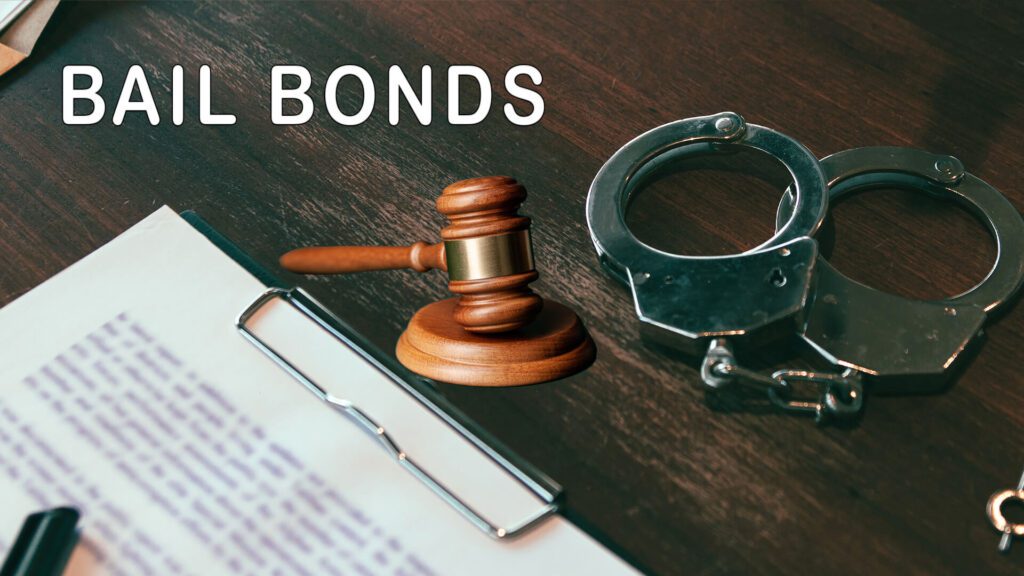Typical Misunderstandings Concerning Using a Los Angeles Bail Bondsman
Typical Misunderstandings Concerning Using a Los Angeles Bail Bondsman
Blog Article
Understanding the Essentials of Bail Bonds: What You Required to Know
Browsing the intricacies of bail bonds is an important facet of the legal system that can considerably influence the implicated's trip via court procedures. A bail bond acts as a financial guarantee for the court, assisting in short-term launch from guardianship while awaiting trial. Nevertheless, the complexities of just how bail bonds operate, the different types readily available, and the crucial considerations in selecting a trusted bail bondsmansman can be daunting. Comprehending these elements is crucial, as the effects of bad moves might result in unforeseen difficulties that expand far past the court room. What are the essential facets that one must realize to effectively navigate this procedure?
What Is Bail?
Bail is a monetary setup that permits a private accused of a criminal offense to be launched from protection while waiting for trial. The key purpose of bail is to guarantee that the defendant stands for future court procedures (Bail Bondsman). Typically established by a judge, the bail quantity varies depending upon the nature of the criminal activity, the offender's criminal history, flight danger, and various other important elements
When bail is approved, the implicated or a representative should pay a specified sum, which might be in cash money or through a bail bond. In some situations, bail can be denied entirely, particularly for significant offenses or if the suspect positions a considerable risk to public safety. The concept of bail is rooted in the assumption of innocence, strengthening the concept that people ought to not be penalized before a sentence.

Comprehending Bail Bonds
A bail bond is an economic tool that promotes the release of a charged individual from wardship, working as an assurance for their look at future court dates. This arrangement allows defendants to preserve their flexibility while awaiting trial, lowering the worries connected with incarceration. The bail bond procedure normally includes a third-party company, called a bondsman, who provides the necessary funds to the court on part of the implicated.
Bail bonds been available in various forms, including surety bonds, property bonds, and cash money bonds, each with unique demands and effects. Surety bonds, one of the most common type, call for an exceptional payment, usually a portion of the complete bail quantity, which is non-refundable. In contrast, a residential or commercial property bond involves making use of property as collateral, while cash bonds demand the complete bail total up to be paid in advance.
Comprehending the subtleties of bail bonds is crucial for defendants and their families. It is necessary to comprehend the prospective monetary implications, including responsibilities and fees to the bail bondsmansman, in addition to the lawful duties linked to guaranteeing court appearances. Understanding of these components help in making informed decisions throughout a tough time.
Exactly How Bail Bonds Work
The procedure of safeguarding a bail bond generally includes several crucial actions that make sure the implicated can regain their liberty while waiting for test. The specific or their representative get in touches with a bail bondsman, who assesses the situation and the associated dangers. The bondsman will certainly require information about the implicated, consisting of the fees, the bail quantity established by the see post court, and any type of pertinent personal details.
Once the bondsman consents to give the bond, the implicated or their rep has to pay a non-refundable cost, generally a percentage of the overall bail quantity. This charge compensates the bondsman for handling the economic risk of making sure the charged appears in court. Sometimes, collateral may additionally be called for, such as property or important possessions, which offers as protection for the bond.
After any collateral and the cost are arranged, the bail bondsman sends the required documentation to the court. Upon authorization, the bail is uploaded, and the accused is released from custodianship. It is crucial for the charged to stick to all court dates and problems, as failing to do so can bring about the forfeiture of the bond and prospective legal effects.
Types of Bail Bonds
Various kinds of bail bonds are readily available to suit different scenarios and requirements. One of the most usual type is the guaranty bond, where a bondsman guarantees payment of the complete bail amount to the court for a non-refundable charge, generally around 10% of the bail. This arrangement permits accuseds to safeguard their launch without paying the entire bail upfront.
One more type is the cash bond, which needs the defendant or a co-signer to pay the complete bail amount in cash money straight to the court - Bail Bondsman. This choice is frequently liked for lower bail quantities, as it ensures the money is returned upon the accused's appearance in all court process
Property bonds involve using real estate as collateral. In this case, the court puts a lien on the building, which can be surrendered if the accused stops working to show up.
Lastly, government bail bonds are especially developed for federal cases, commonly including higher quantities and added complexities. Understanding these numerous bail bond types is important for defendants and their families in making educated decisions during a challenging time.
Selecting a Bondsman
When choosing a bondsman, it is vital to think about a number of vital aspects that can impact the overall experience and outcome. First, examine the bail bondsman's online reputation by researching on-line reviews and obtaining recommendations from relied on resources. more helpful hints A dependable bail bondsmansman will have a history of professionalism and trust and effective situations.

Many bail bondsmen bill a non-refundable cost, typically around 10% of the bail amount. Openness in pricing is learn the facts here now a hallmark of a credible bondsman.
Conclusion
In summary, comprehending the principles of bail bonds is crucial for individuals associated with the lawful system. Bail functions as an economic guarantee of court appearance, while numerous kinds of bail bonds provide to different conditions. Understanding the functional mechanisms of bail bonds and selecting a trustworthy bail bondsmansman can considerably affect the total experience. A complete examination of available alternatives guarantees notified decision-making, eventually helping with a smoother navigation through the complexities of the legal procedure.
The details of exactly how bail bonds operate, the different types readily available, and the important considerations in picking a respectable bail bondsman can be intimidating. The bail bond procedure typically includes a third-party business, known as a bail bondsman, who gives the essential funds to the court on behalf of the charged.
The most common type is the guaranty bond, where a bail bondsman assurances payment of the complete bail quantity to the court in exchange for a non-refundable charge, typically around 10% of the bail. Bail serves as an economic guarantee of court appearance, while different kinds of bail bonds provide to various circumstances. Comprehending the operational mechanisms of bail bonds and selecting a trustworthy bail bondsman can considerably influence the total experience.
Report this page